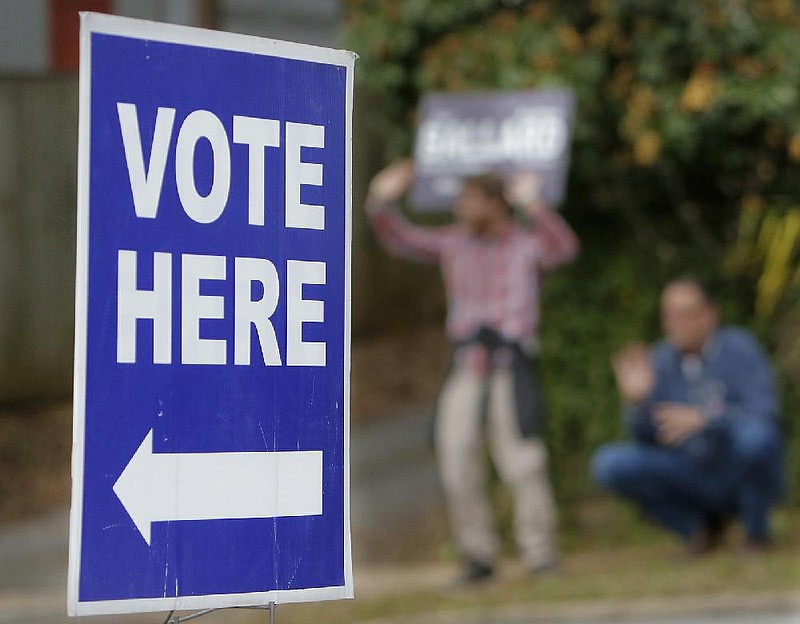The states can and often do operate as "laboratories of democracy," where they can govern themselves differently and independently from each other. In the spirit of that metaphor, here are some observations from Tuesday's off-year elections.
Pro-Biden news organizations and pundits were quick to call the night a "win" for the low-approval-rating president.
Time will tell whether this week's results in scattered states are indicative or predictive in any meaningful way for next year's national campaign.
Abortion, Abortion, Abortion
With a weak president presiding over a host of malaises from high inflation and interest rates to foreign policy and age-competency questions, Democrats are looking for an issue to galvanize the faithful. Many think abortion might be it; the conventional wisdom seems to be that it is to Democrat success at the polls what location is to real estate.
Maybe, maybe not.
On Tuesday, as in seven other states where the subject has been brought to a vote as a ballot measure, Ohio expanded abortion rights. This is less a political triumph than the Biden hopefuls believe, however, and more an exposed failing (among many) by Republican so-called strategists.
For one thing, polls consistently show that a majority of Americans support limited abortion rights in select situations, so all moderate proposals start out with a high likelihood of success. Especially in referendums, where the public at large votes on the issue.
Thus it's no surprise that when 60-plus percent of Americans in general say abortion should be legal with restrictions, 57 percent of Ohioans would cast a vote granting that very thing. The more astonishing matter is how much difficulty Republicans are having in grasping that math.
To hear Democrats tell it, the various state successes repudiate the U.S. Supreme Court's decision to overturn Roe v. Wade. But the legal criticism of Roe was never the merits (the original limits and regulations changed over time anyway), but rather a separation of powers usurpation question. The Constitution does not mention abortion, and unelected Supreme Court justices shouldn't legislate from the bench by playing make-believe with penumbras to add "conferred" rights.
The court was explicit in its Dobbs decision overturning Roe that the issue should be resolved by the people in each state, which is exactly what's been happening.
And to be clear, until Roe was overturned there was immense pressure at the federal level from extremists to force nationwide acceptance of unrestricted abortions at any point in a pregnancy.
That position hasn't sold or polled well since Dobbs. In most cases where abortion rights have been re-established, it's still banned after the point of viability, around 22-24 weeks.
In Ohio, voters approved Issue 1, which established a state constitutional right to abortion but also allowed a ban on abortions after fetal viability. That win was bought with nearly $25 million in pro-abortion advertising spending, most of it from out-of-state national organizations. Had abortion rights advocates sought an absolute, no-restriction right to terminate a pregnancy--which national surveys show does not enjoy majority support--the measure likely would have failed.
Issues Versus Individual Candidates
Ohio gave Donald Trump its electoral votes by an 8-percentage-point margin in 2020, polling a million more votes than Tuesday's abortion amendment garnered. The latest head-to-head poll with Joe Biden (Nov. 1) shows Trump with a 5-percentage-point lead.
Red-state Kentucky, which Trump won by 26 percentage points in 2020, did re-elect its Democratic incumbent governor on Tuesday, to exuberant Democrat fanfare. But Trump got more votes himself in 2020 than all votes cast on Tuesday--and nearly twice as many as Andy Beshear received.
Beshear won in 2019 by barely 5,000 votes, and improved his margin this year to nearly 70,000--largely by distancing himself from President Biden and keeping his campaign focused on local interests and accomplishments. His father's broad popularity as a two-term moderate governor didn't hurt, either.
But Republicans trounced Democrats by hundreds of thousands of votes in the other statewide contests, and the GOP dominates both Kentucky's national legislative delegation and its general assembly.
However or whatever Beshear contributed to a Democratic "win" is chimerical; the likelihood of Biden winning Kentucky in 2024 is nil. Perhaps Beshear's pro-choice rhetoric played some role--Kentucky's abortion ban is one of the nation's strictest--but, then again, perhaps Kentucky is also just not yet ready to elect its first Black governor.
Either way, political insiders of both stripes there predict a GOP candidate will eventually prevail as governor. One longtime Democratic former state representative quipped, "it'll be hard for a Democrat past Andy."
The "news" that New Jersey Democrats retained a legislative majority was a headline sham. The Garden State hasn't voted for a Republican presidential candidate in 30 years, the state legislature has been Democrat-controlled for 20 years, and it's a Biden shoo-in.
Virginia's continuing blue-hue-shifting wasn't really news either, even though Gov. Glenn Youngkin had optimistically hoped to stem that tide. The attempt at an abortion tie-in is a stretch; if anything, it's just another example that a vote on an issue is one thing, and a vote for a president--especially between two unpopular options--will be quite another.
Dana D. Kelley is a freelance writer from Jonesboro.

